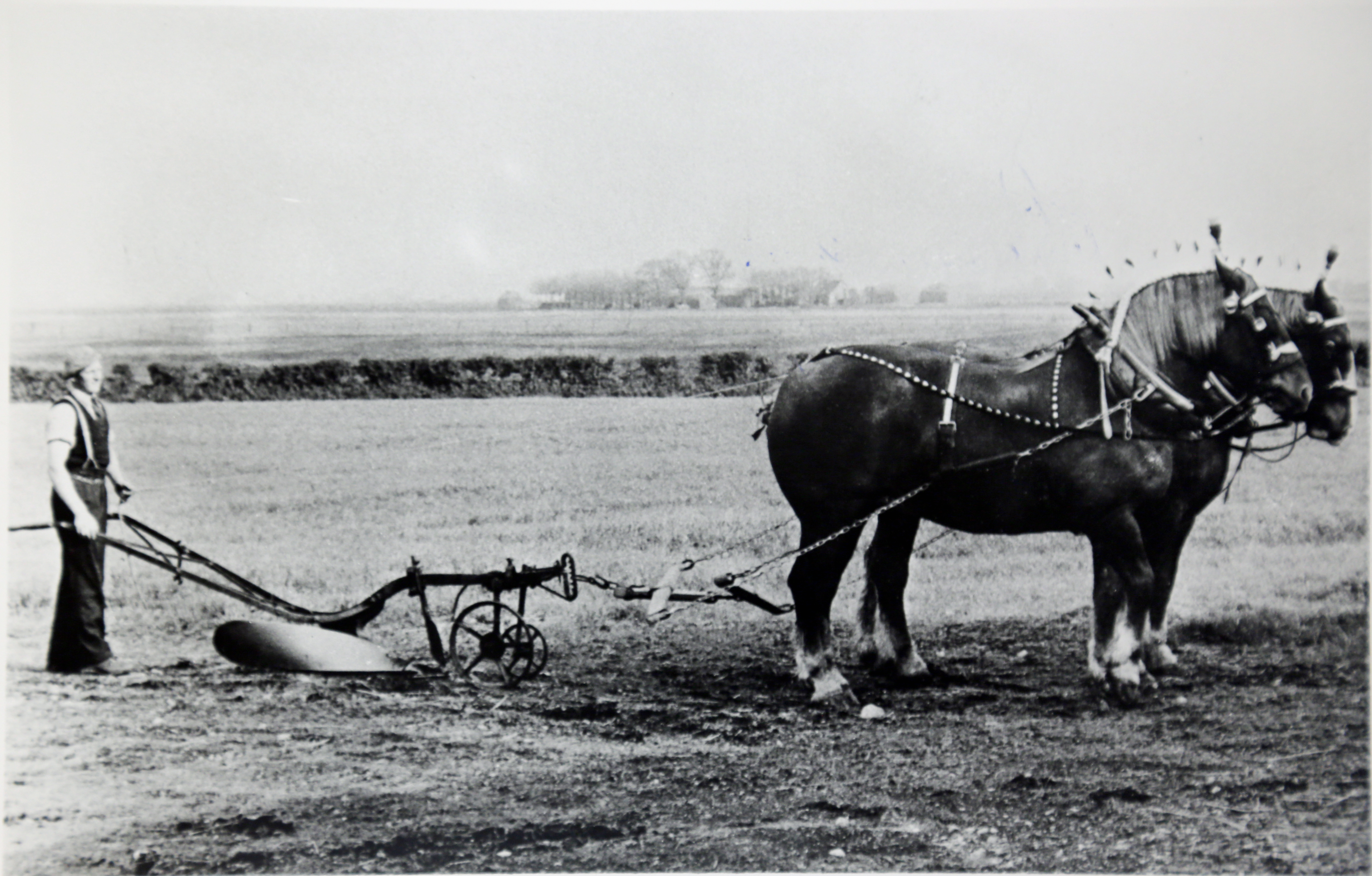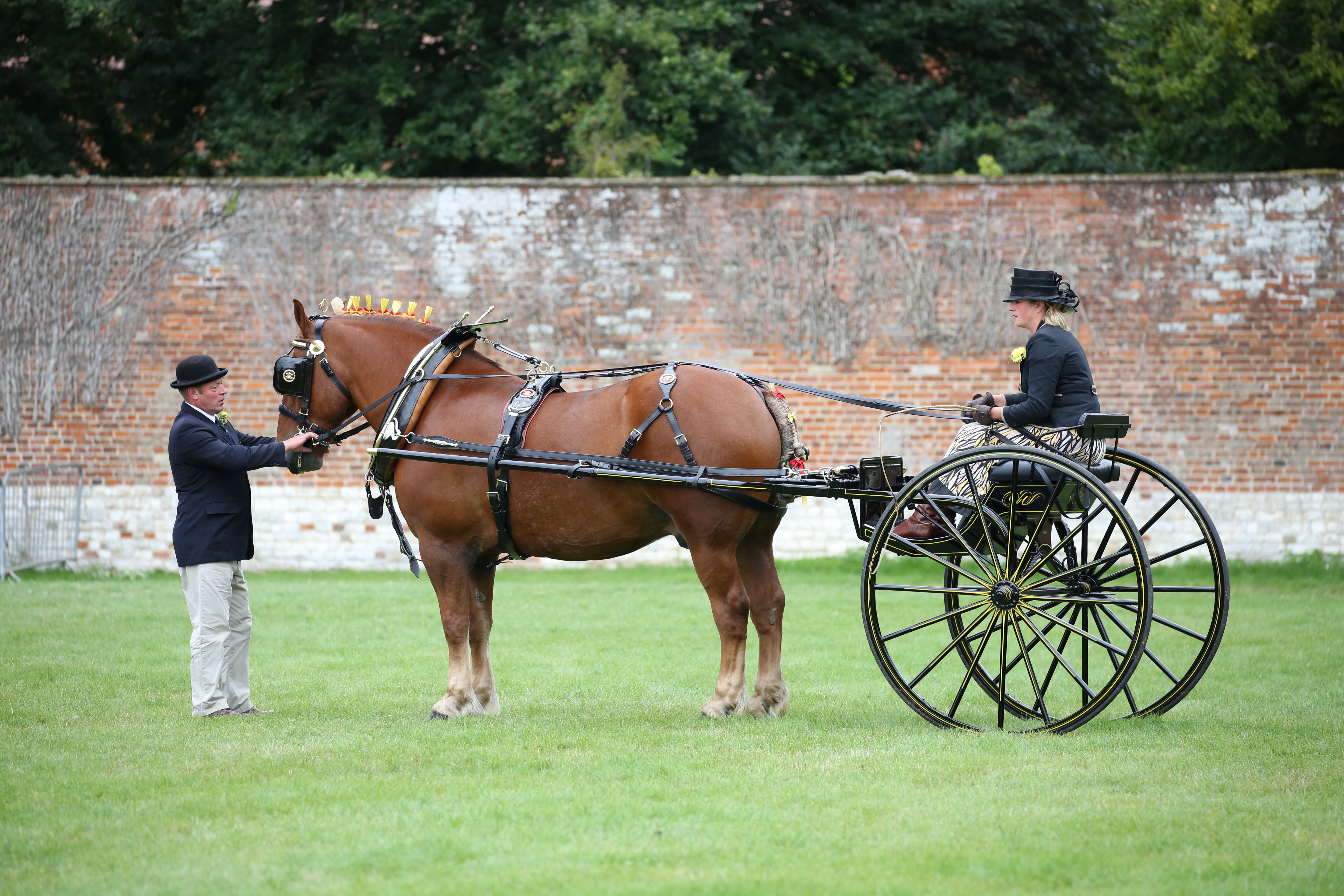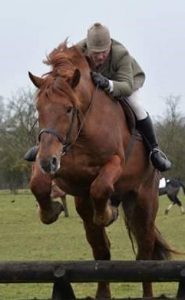
Bob Peacock ploughing in 1952
The Suffolk Horse is one of the true icons of our county of Suffolk. It is one of the four British breeds of heavy horse bred for ploughing and pulling loads in farm work, and used for pulling guns and heavy supply waggons in the First World War. (The other established breeds of British heavy horse are the Shire, the Clydesdale and the Percheron.)
A more popular and older name for the Suffolk Horse is the Suffolk Punch. Its colour has to be chesnut, (always spelt in the traditional Suffolk way, without the middle t of chestnut).
Horses took over from oxen for farm work and heavy haulage because a horse collar is more efficient than a yoke for pulling. They are easier to shoe because a horse can stand on three legs while the fourth foot is shod. An ox cannot do this and had to be held up in a wooden frame.
Farm horses were gradually replaced by tractors from the early 1940’s and this trend accelerated hugely during and after the Second World War when tractors were brought in from the USA and also developed in the UK. Huge numbers of much-loved farm horses had to be sent for slaughter and many of the recordings we took from old horsemen in our 2013 oral history project, (with Heritage Lottery Funding), tell how upset the horsemen were to see them go, many being shipped live to the Continent for horsemeat.
By the 1960s the population of Suffolk Horses had fallen to such an extent that only nine foals were registered in the Stud Book in 1966. A few farmers kept the breed alive over the next few years with a gradual increase to 50 foals in 2010. Since then, national economic problems caused incomes to fall and numbers again dropped a little. In 2019 34 foals were registered in the UK and in 2020 there were 32.

Zoe Meeks and Glen Cass at Suffolk Horse Spectacular 2015
Suffolk Punches are still used for agriculture by a few people and there is growing interest in using them for eco-sensitive logging, and general haulage as in Richmond Park. They are always popular with spectators at agricultural shows, providing as they do, a spectacular display in the showring with their beautiful chesnut colour and gleaming brasses, especially on a sunny day. Sadly, fewer owners are showing them pulling traditional farm carts, waggons and implements because it is easier for horses and owners if they use modern, lighter, and more easily maintained vehicles derived from competitive horse-driving trials. Another popular show class is the light two-wheel cart that used to be called “ladies’ carts”, but are now driven with a single horse by smartly-dressed men as well as women.
As people get bigger and heavier they need stronger horses if they wish to ride. Many are now riding Suffolk Horses and even hunting or competing successfully. This provides another market for the foals that are being produced.
Diversification of the use of the heavy horse does increase interest in owning one and this in turn increases the demand for foals that can be trained for this work. The Suffolk Horse Society supports breeders by giving grants to mare and stallion owners to help produce healthy foals. Much of the money for this has come from the Horserace Betting Levy Board but this funding is likely to dry up as income from betting taxes falls because of new government policies. However, research into more effective breeding programs is going ahead and modern genetic studies are proving very helpful in helping owners select the best mate for their horse.
This is important because the Suffolk Horse has a total UK population of less than 500, and it is classified as a critically endangered breed by the Rare Breeds Survival Trust. As the Suffolk Punch horses are used less for farm work, such as ploughing and pulling waggons at the walk, and more for riding or pulling light carts at the trot, it is likely that the breed will change as breeders select horses to suit this new work.
The important thing is to ensure that groups such as the Suffolk Horse Society ,and breeders continue to support and oversee the continuation of the breed itself both to preserve its genetic potential and for the enjoyment of our successors.

